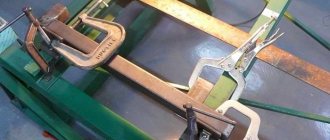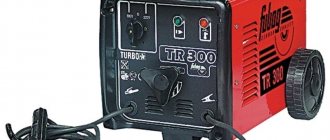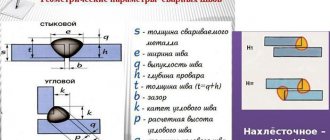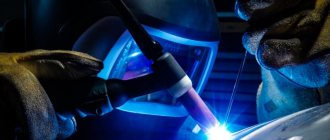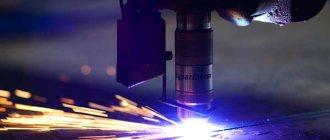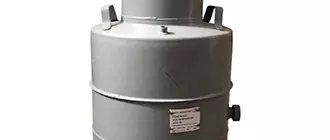The famous MAW is manual arc welding, a people's favorite and the most popular welding technology for a long time. Such an achievement is worth a lot. The method is based on the use of special electrodes.
All actions in the RDS are performed manually by the welder. Despite the popularity and seemingly well-studied nature of this method, it would not be harmful for you and me to repeat the basic facts and check how our dear RDS is doing today.
general information
This method has additional international names; abbreviations are widely used in the manufacture of components. You can find - MMA (Manual Metal Arc - the literal translation of our term), the Russian abbreviation RDS, or in short - RD. The method was invented by Russian engineer Nikolai Bernardos, who subsequently improved his device and created varieties. The patent for the invention was purchased and introduced into the production of metal structures around the world. The classic material is a carbon electrode, but there are new inventions, methods that use melting rods.
Stages of the procedure
All professional and amateur welders operate according to the following algorithm:
- Preparation involves thoroughly cleaning all surfaces and securing the workpiece in the workplace.
- The appearance of an arc. For it to form, you need to apply voltage and touch the metal with the tip 2-3 times with quick movements.
- Carrying out a seam - speed and angle varies depending on the physical characteristics of the material.
- Final processing - unevenness should be removed, excess scale should be removed, and the joint should be cleaned.
Sometimes additional operations are required, such as preheating the workpiece or supplying shielding gas. However, the main elements of the algorithm are reflected correctly.
Power supplies
Transformers with a low output voltage and high current of up to several hundred amperes can be used as a source. When using direct current, a rectifier is used to convert the alternating component into direct current. A variety of types can be used, including inverters that are lighter in weight and smaller in size. They use the principle of high-frequency voltage conversion.
The current strength can be changed by various methods: by changing the number of turns on the coils or the distance between the secondary and primary coils.
Operating principle of equipment and technology of manual arc welding
From the power source, alternating or direct current is supplied to the electric holder (both options are found). The voltage allows you to create an electric arc that heats two metal surfaces. When the handle moves behind the conductor, a weld pool is formed. In this area, diffusion joining of molten alloys occurs. After they cool, the substance crystallizes and again turns into a solid element - already monolithic. To prevent the seam from oxidizing under the influence of oxygen, the wire in the electrode is coated with a special compound, which, when melted, releases an inert gas that displaces O2.
How is RDS done?
The electric arc is maintained by the supplied current. In this case, different polarities are possible. The classic option is that a minus is applied, and a plus is supported on the workpiece, but a situation occurs with the opposite supply of voltage. Electric arc length is the distance between the weld pool and the electrode. It depends on the speed of the electrical holder. In addition to the gas from the conductor coating, slags are formed in the area of iron smelting, which contribute to:
- increasing the speed of metal processing;
- longer maintenance of high temperature;
- good, even welded joint;
- protection from oxygen and oxidation.
How to strike an arc
It is necessary to lightly touch the workpiece with the end of a vertically directed electrode 2-3 times. If you do not quickly remove your hand, sticking will occur and the surface will be damaged. The second method for manual electric arc welding is to move the end of the material along the future seam. Let's watch the training video:
How to move a weld correctly
You can cook it at an angle “back” and “forward”, that is, towards yourself and away from you. In the first case, the heating of the alloy is stronger, and in the second, less. That is, you should make a choice depending on the material. The angle of inclination is selected in accordance with the formed weld pool. The length of the electric arc should always be the same - about 2-3 mm. Depending on the required strength of the structure and the alloy used, you can choose one of the types of electric arc welding motion, the diagrams of which are presented in the article.
Operating principle
In this method, current is supplied to the workpiece through a rod, which forms a welding arc. The latter is concentrated radiant energy that heats the metal to its melting point. Due to the fact that the current is supplied strictly to a certain point, the remaining parts of the workpiece are not damaged during this arc welding scheme.
A seam between metal products is formed during the crystallization of the material, which starts immediately after the heating stops. That is, this process starts during the cooling of the treated area, including due to forced cooling. In this regard, the connection requires a certain time to gain strength, determined by the cooling rate.
Safety in MMA
Always wear a protective suit and shoes with strong toes and thick soles. Never start working in flip-flops or with any parts of your body exposed. You should also wear special welding gloves - quite sensitive to movement, but well protective. Be careful with your eyes and always wear welding goggles or a visor. Prepare your work area thoroughly and remove flammable items. Always have a fire extinguisher and a first aid kit nearby, as the activity is associated with risks.
Consumable electrodes used in the manual arc welding process
All conductors on sale can be divided into:
- Fusible. Their core melts and is added to the molten metal of the two workpieces and remains in the weld. It is coated with flux powder that is effective for creating a gas atmosphere.
- Infusible. Made from tungsten and used exclusively to supply current. Gas for the bath is supplied by a special hose.
Another difference is the cross-section diameter. The larger it is, the higher the current strength and the wider the maximum seam. More details in the video:
Filler wire - what is it?
Another variety. In essence, this is a large coil of material (aluminum, copper), which performs the same functions as a fusible electrode, that is, it conducts current and at the same time is a material for forming a connection between structural elements. The difference is the absence of sprinkling, so gas must be supplied from the outside. The second option is to sprinkle flux powder along the seam formation.
Advantages and disadvantages
Pros:
- ease of use, it is not necessary to fix the part to the floor, you can even work in weight;
- installation does not take up much space;
- it is possible to combine different alloys;
- can be moved to another place, taken with you in the car;
- ease of use - you can easily teach the basics of electric arc welding technology.
Minuses:
- Contact with gas and bright flashes of light negatively affect the health of the welder.
- A good, even seam will only be achieved after long experience and the ability to work with various materials.
- Quite a labor-intensive and lengthy process.
Let us conclude that the RDS for welders is a device that is more suitable for work at home and in small industries.
Methods of manual arc welding of metal: welding work in different positions
This is one of the biggest advantages of installing an RDS because the worker can be in any relationship with the surfaces being welded. You will get a good connection if you adhere to certain technical standards.
Bottom position
The most common one. The workpiece lies on the floor or a low table, the person is on top. Fasten the parts well and ensure that the bath forms smoothly and evenly.
Vertical
Due to attraction, the molten metal will tend to drain, and smudges may form. It is easier to work from top to bottom, but it is better the other way around, since drops of hot material will cover the finished, hardened seam.
Ceiling
Work must be done very slowly, making periodic intervals. This way the alloy will have time to cool and crystallize so as not to drip down. This also contributes to additional heating.
Electrode position during operation
The location of the working part will depend on the positions of the seams. The following placement can be distinguished: bottom seams, vertical, horizontal on vertical planes, ceiling. Vertical seams can be created in any direction, both from bottom to top and vice versa.
The essence of the process and the main directions of movement during operation can be studied in the image.
Electric arc
This term refers to a prolonged discharge of current that creates high temperatures. In fact, this is the combustion of gases, which under normal conditions do not transfer electrons and ions so intensively. It is triggered by electron emission - the release of a negatively charged particle at the moment of contact between the electrode and the metal.
The influence of welding arc welding on the quality of the seam
The shorter the distance, the smoother the connection - without drops or leaks. But it is very difficult to hold a few millimeters. Also, a short electric arc with the correct manual arc welding process leads to:
- uniform melting of the coating;
- an even beam of sparks;
- sufficient penetration depth;
- lack of oxidation.
The parameter can be determined by the sound - if it is uniform, without clicks or glitches, then you should strive to maintain this distance.
Cons of RDS
All methods have disadvantages, where would we be without them?
The manual arc has modest disadvantages:
- relatively low productivity, as with all manual welding methods;
- the quality of the weld seam largely depends on the qualifications of the welder, if the work is not done on an inverter. The inverter eliminates work experience;
- the effect of harmful welding factors on the body.
It should be noted that the disadvantages of the method can be considered its features, which are determined by the essence of the physical and chemical process.
Influence of the mode on the seam
When working with different surfaces, you should arrange the elements differently and weld the ends, straight cuts, sections, etc. But this should not force you to change hardware settings. The choice of mode depends solely on the width and depth of penetration you need. The table will help you choose:
| Metal thickness, mm | Current strength, A | Electrode diameter, mm |
| 3 | 175 — 185 | 3 |
| 5 | 200 — 225 | 4 |
| 7 | 250 — 270 | 5 |
| 10 | 300 — 330 | 6 |
Impact of current
The higher the indicator, the deeper the metal melts, the stronger the connection. But at the same time its breadth decreases. The type of equipment used also matters, whether it operates on alternating or direct electricity. In the first case, the connecting section will be narrower.
Technical capabilities
Manual welding has significant limitations on the thickness of the parts being welded; this is its main disadvantage. As a rule, sheets thicker than 10 mm are not welded using this method.
Others include the relatively low speed of the process and the direct dependence of the result on the skill of the welder. The manual welding process, like any manual process, is difficult to standardize: the result depends on many factors. Among them:
- type of current source;
- the power of the source;
- characteristics and properties of the processed alloy;
- edge thickness;
- compliance of the electrodes with the task assigned to them;
- well-chosen welding mode.
The peculiarities of arc welding are that a relatively low voltage and a very high current are used to produce it. The arc voltage ranges from 30 to 90 V (many welding machines for home use are rated at an average value of 48 V), but the current is very high - from 90 to 350 A.
Manual arc welding basics training
To become a professional manual arc welder, you must undergo training at a technical school. A professional worker has a rank that characterizes his ability to work with various materials and complex structures. But for home use, just read our article and watch the video:
On the site you can learn about other properties of metals, as well as find a wide range of equipment for band sawing. Go to our catalog to find out more. To clarify the information you are interested in, contact our managers by phone;; 8. They will answer all your questions.
